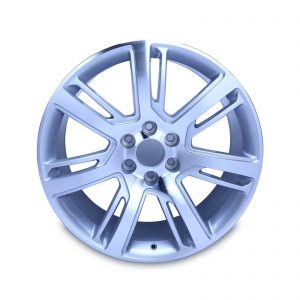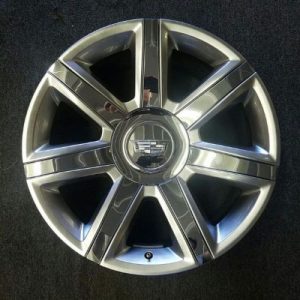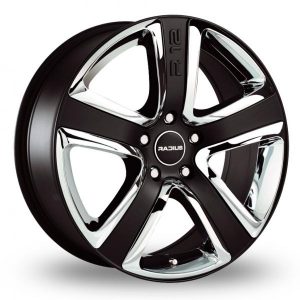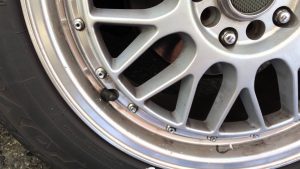Are you confused on the wheel jargon such as OEM, Replica, and Aftermarket?
Or perhaps you know their meaning but can't decide which is the best option for you? Are there positives and negatives to either option?
Let us break it all down for you and simplify the process!
OEM
OEM stands for original equipment manufactured, meaning the parts were made (or approved by) by the car manufacturer with no aftermarket company. For example, BMW, Mercedes, Ford, etc. The wheel pictured here is a generic original Cadillac wheel.
Replica
A replica wheel or part is literally replicating the original to be exactly the same finish and structure (specs), or 90% close. A replica wheel is technically aftermarket because the wheel is not maufactured by the original vehicle company, but the difference is it's supposed to copy the original. Think of replicas as knock-off designer shoes or purses. Most of the time you can't even tell the difference, which you're not supposed to. If you see a wheel that is described as "Replica OEM", the wheel is NOT OEM. Little confusing right? 
Aftermarket
An aftermarket wheel is manufactured by a company not affiliated with the car manufacturer and the style is not trying to replicate the original. The visual look of most aftermarkets is very different than originals.
How to immediately tell if a wheel is a replica or original:
The OE part number on the back of the rim is the most accurate way to identify an original, simply Google the number and the result will show what car and manufacturer it came from.
Other ways include the style of the rims:
Rivets
Rivets are pieces of metal which sometimes adorn the face of aftermarket wheels, suggesting they are holding two wheel pieces together. Rivets are very rarely on OEM models, as most original wheels are one piece. Most aftermarket styles have an exaggeration of a rugged look, so the rivets provide some extra oomph.
Finishes
A huge style difference between OG's and aftermarkets is the variety of colors and styles an aftermarket wheel may come in. If you look across various aftermarket brands, you will notice one style will come with five or six different finish options. Even some you can choose to have done (but that's considered custom and can be very expensive). Finishes vary from color to texture, like chrome, machined, matte, gloss and more. OEM's have options for finishes as well, but usually not as much, maybe just one or two.
Size
The typical size for an OEM (aluminum) wheel is between 16"-18". Pretty standard for most passenger vehicles, trucks go a little bigger to 19"-22". Aftermarkets range can go up to 24", you wouldn't think that those 2 inches would make a difference, but try finding a tire that size! Once you go above 18" finding good affordable tires is a nightmare, expect to pay at least $300 for one, depending on the brand of course.





